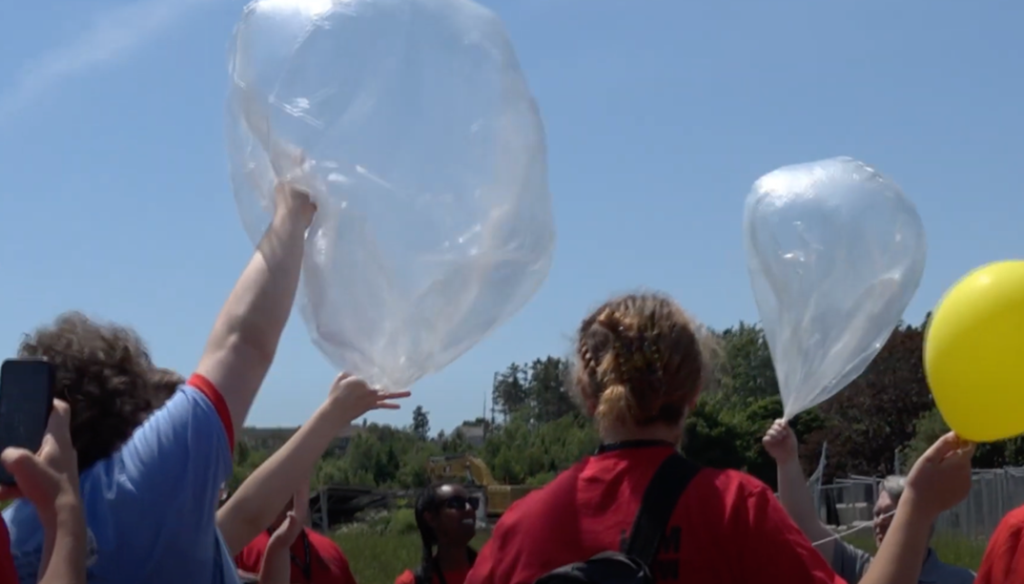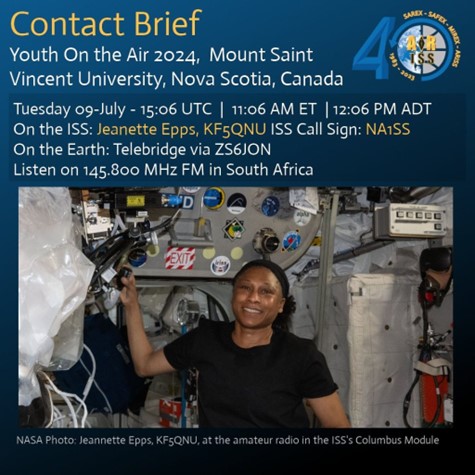Editor’s Note: This is the third in a series of articles about the excitement and learning young operators can experience at Youth On The Air (YOTA) Camps. Discover much more about these wonderful opportunities for fun and friendship—and how a youngster in your life can take part— at YOTA’s official website.
It has been approximately a year since the conclusion of YOTA Camp 2024, which took place in Halifax, Nova Scotia. Since then, campers have stayed in touch with each other and maintained many of the connections we made there.
While YOTA camps share some similarities in structure year to year, each year’s host location presents a set of new and unique opportunities for both radio and non-radio-related activities. Denver this year lent itself perfectly to a Summits On The Air (SOTA) session, but Halifax had even more of a unique opportunity: a Parks On The Airâ (POTA) activation on Georges Island.
While the POTA activation was definitely the highlight of the week, every day—Monday through Friday—was absolutely jam packed with sessions and activities designed to expose campers to as many different aspects of the hobby as possible.
After the opening ceremony and a shack tour and demonstration Sunday evening, we started out the day Monday morning with a D-STAR session led by our attending Icom representative, Rose, VA3RZZ. Campers set up and learned how to use D-STAR with the HTs that Icom lent us for the week. Then we headed outside to learn how to prep for and execute a balloon launch in a session led by two of our returning campers.

We then had a choice of attending a session on nets or CW. In the nets session, campers learned what a net is, how to join and check into one, how to start a net, and how to get involved with some of the nets that already exist for youth. In the CW session, campers learned about the value of CW and how to start using it. Then we played a version of the game Battleship, but in CW! We ended Monday with time in the shack.
Tuesday was just as busy a day. It started out with a foxhunting session. Campers learned some basic techniques and strategies as well as how to coordinate and host a foxhunt for their local clubs at home. After the foxhunting session, campers built a few kits, including a tiny 3D-printed straight key and an antenna. We also did an ARISS (Amateur Radio on the International Space Station) contact using a telebridge, where another amateur radio operator (in this case, ZS6JON in South Africa) set up and operated the station that was in direct contact with the International Space Station (ISS). The group had a lot of fun asking NASA astronaut Jeanette Epps, KF5QNU, all kinds of questions

Watch the video below of YOTA campers talking with Jeanette, KF5QNU, on the ISS. The contact begins just before the 30-minute mark:
Following those sessions, we headed into Halifax for a tour of the city. We saw some of the city’s most important monuments and went on a short boat ride around the harbor. Throughout the week, we learned a lot about Halifax’s history, including the city’s involvement in the Titanic disaster and the Halifax Explosion of 1917. On our way back to Mount Saint Vincent University where we were staying, we stopped at one of the cemeteries where victims of the Titanic sinking were buried in 1912.
Watch highlights of Tuesday’s activities in the video below:
On Wednesday we had our annual satellite session where campers learned about the basics of satellite operating and how to set up a satellite station at home. We then had a prep session with those who would be leading the POTA session the next day. We packed up the equipment we would need and made sure everything was in order. Thursday morning, we were up bright and early for our POTA activation. We split up so there wouldn’t be too many of us on the island at once. We rotated between operating from a ship in the harbor, visiting a Halifax historical museum, and actually operating from the Georges Island National Historic Site.
For the POTA stations’ setup, we made sure to have SSB, digital, and CW stations so we could make as many contacts as possible. The CW station, which is where I spent most of my time, was right on the edge of the island, so we had a great view of the water around us and a nice view of downtown Halifax as well. Pretty soon, it was time to pack up our gear and head back to the university for dinner and one last round of operating with our special event call sign, “VE1YOTA,” before our closing ceremony the next morning.
Even though we were all sad to have to go our separate ways, the friendships we made throughout the week would far outlast the week itself, as would all of the things we learned from the sessions and our peers.

